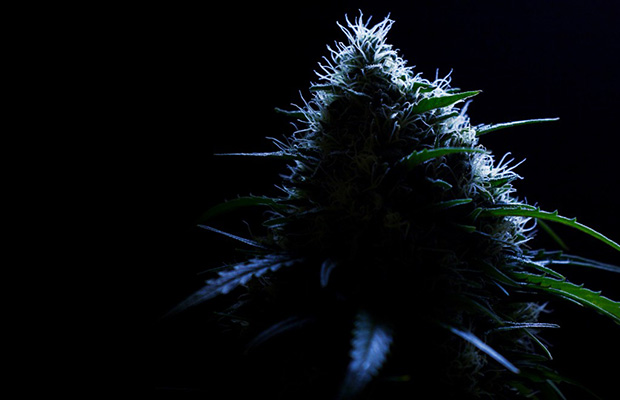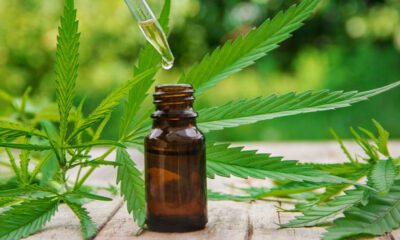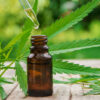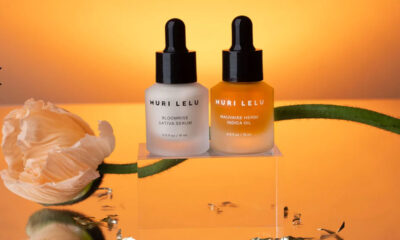The CBD Phenomenon
Learn more about CBD, the non-psychotropic cannabinoid found in cannabis.
Back in 1963, when young Israeli researcher Raphael Mechoulam isolated and identified Cannabidiol (CBD) he probably never would have, in his wildest imagination, been able to imagine the controversy this benign little cannabinoid would create.
When he isolated CBD, Mechoulam was seeking to identify the “active” ingredient in cannabis, so he kept looking. Then, in 1964, shortly after the discovery of CBD, ∆-9 Tetrahydrocannabinol (THC) was discovered, isolated and labeled “the active ingredient.”
Today, there is a high demand for CBD medicines. The demand, however, stretches far beyond the insular world of legal medical marijuana, thanks to a mainstream TV special hosted by CNN’s Dr. Sanjay Gupta, which first aired in the summer of 2013.
Desperate families in every single red and blue state want to get their hands on CBD, largely, in part, due to the fact that CBD, unlike THC, is non-psychotropic and won’t induce any sort of paranoid or psychedelic effect, making it more appealing to sick people who don’t like the “high” cannabis can induce. Additionally, when found in cannabis high in THC, CBD is known to temper the paranoia and anxiety often associated with high THC cannabis.
In fact, CBD has powerful anti-inflammatory, anti-spasmodic, anti-depressant, anti-anxiety and anti-convulsive properties. But all of the identified cannabinoids (60+) and terpenoids (essential oils found in cannabis) have known therapeutic effects, particularly THC which is an appetite stimulant and has anti-cancer, anti-bacterial and analgesic properties. The research on identified cannabinoids, including Cannabigerols (CBGs) and Cannabichromenes (CBCs) all have wide-ranging medicinal effects, accented further by their terpene profiles.
In the early ’90s, years after Marinol, a medicine made primarily of synthesized THC, had been on the market and proved to be less effective than whole-plant cannabis, Mechoulam began studying what Dr. Gupta now refers to as “the entourage effect” of cannabinoid and terpenoid profiles as a whole singular medicine to treat an extremely wide and growing range of afflictions.
Cannabis medicines don’t fit into our generally accepted medical structure, which can be described as “pharmacologicalism,” or the idea that each individual symptom can be treated by an individual man-made pharmaceutical drug.
Cannabis medicines don’t work like that — cannabis has the potential to be bred for specific cannabinoid ratios and terpene profiles to more adequately meet the needs of a wide variety of patients and effectively replace the bulk of pharmaceutical pills patients currently use, but there is still a lot of research that needs to be done to get us to that point.
Today, the medical cannabis industry and movement is at a crossroads; as marijuana becomes incrementally legal across the nation it will take a fundamental reorganization of commonly accepted notions of medicines to fully realize legalization of this wrongly maligned plant. There is a lot of education needed for both the public and the medical community at large about cannabis and it will be a slow and endless process discovering all the different ways in which cannabis can be utilized as medicine.
The idea that there are two different types of marijuana — medicinal and recreational — stems from our distorted notions of medicines, which were shaped by misinformed or willfully ignorant public policies. CBD-only legislation is fueled by pharmacologicalism and the idea that CBD is somehow more medicinal than THC because it is less “fun.”
“Cannabis has lots of medicines in it, not one [cannabinoid] is more medicinal than the other. That is silly,” says Sunil Aggarwal, M.D., Ph.D. Dr. Aggarwal is a well-known cannabis researcher who is currently a senior resident at New York University’s Langone Medical School.
How do we reconcile the scientific farce of CBD-only legislation with the real need for healing and the demand for “recreational” cannabis? How long will patients be left to fend for themselves against poorly written legislation fueled not be research or science, but by television, by entertainment?
Non-Psychotropic Properties
The idea that there is a version of medical cannabis that “doesn’t get you stoned” appeals to conservative ideologies, particularly in parts of this country unexposed to the medical cannabis industry.
“The whole idea of “getting stoned” is a social construct,” says Dr. Aggarwal.
The notion that CBD is a non-psychoactive form of medical cannabis is also false, but it has become the premise for CBD-only legislation that in some states actually redefines “medical cannabis” to mean any strain high in CBD and so low in THC it can attempt to classify as “hemp.”
“We have to be very careful with our [legal] definitions, if someone says we must legalize CBD ‘because it is non psychoactive,'” says Jahan Marcu, PhD., a well known cannabis researcher and Research and Development Director for Green Standard Diagnostics. “What is wrong with this rationale is that CBD is psychoactive. ‘Pscyho’ means ‘brain,’ ‘active’ means ‘active.’ We know that CBD goes into the brain and crosses the blood brain barrier just like THC.”
“We are making the equivalent that CBD is THC without the side effects, which isn’t true,” says Dr. Marcu. “They are distinct compounds with distinct pathways and distinct receptors.”
Because it is the lives and wellbeing of children at the center for the demand for CBD, the fighting has gotten contentious, pitting activist against activist, politicians against activists, activists against politicians, industry against activists and activists against industry. Parents desperate to relieve the suffering of their sick children are caught in the political cross hairs.
“People seeking cannabis medicine are pulled in numerous directions by lawmakers, profiteers, the medical establishment and by the activist community,” says Tori LaChapelle. “The confusion and false promises created by CBD laws and cannabis product marketing have also created a divide and at center are sick kids and vulnerable families. It’s a struggle for advocates to keep up with.”
La Chapelle is a Wisconsin nurse, activist and founding member of Parents 4 Pot, a group that advocates for families that want to end the War on Drugs. LaChapelle specifically works with the families of sick children. She was a vocal opponent of her state’s CBD-only law.
Demand For High-CBD Medicines
The demand for isolated cannabinoids is not a new phenomenon. When the AIDS epidemic struck, the term “medical marijuana” began to reenter the American lexicon. In the summer of 1986, in the height of the epidemic, marijuana as a medicine began to again be recognized by small sectors of the public, specifically those affected by the deadly virus.
After the beneficial effects of cannabis as a medicine started to permeate some sectors of society, the “active” ingredient, THC, was synthesized and packaged as a Schedule II controlled substance under the name Marinol (dronabinol). It would later be reclassified as a Schedule III controlled substance, meaning it could be prescribed by doctors and is considered to be non-narcotic and non-addictive. Marinol is still available today in all 50 states.
“The government was trying to get the FDA to quickly approve THC [Marinol] so they could stave off the medical marijuana movement in the ’80s,” says Dr. Aggarwal.
Marinol was and still is controversial for many reasons. First, patients reported side effects they didn’t typically feel when they used whole-plant cannabis including headaches, nausea, vomiting and stomach pain — all symptoms that are now proven to be controlled by whole plant cannabis. Second, the effects of isolated THC were not leveled by the other medicinal compounds in the plant, making the psychedelic effects wildly uncomfortable.
“As a pure drug [Marinol] has some issues. It doesn’t get mediated by the other whole plant cannabis compounds that synergize its effects,” says Dr. Aggarwal.
Years after medical cannabis came above ground in California, CBD was rediscovered and has since found its way onto the shelves of legal dispensaries in a handful of states.
In 2008, Steep Hill Lab was founded by David Lampach, Addison Demoura and Steve DeAngelo. DeAngelo owned and operated Harborside Health Center, which is known worldwide as the pioneer medical cannabis dispensing model as well as a vital center of medical cannabis research. Lampach, Demoura and DeAngelo created the lab in order to provide safety standards to consumers in the wildly unregulated California market.
As the lab and dispensary grew together, they began to discover a correlation between strains testing higher than average levels of CBD and the positive effects being reported by Harborside’s patients. With this knowledge, strains began to be bred to raise the levels of CBD in certain strains and, ultimately, infused products such as tinctures, topical ointment, edibles and oil.
But it wasn’t until the summer of 2013 that CBD would really take the nation by storm, thanks to a CNN documentary special hosted by Dr. Sanjay Gupta titled simply “Weed.” Gupta is a neurosurgeon, college professor and President Obama’s 2009 pick for surgeon general of the United States. Gupta withdrew his name from consideration and continues to act as CNN’s chief medical correspondent.
Gupta prefaced the first special with a shocking op-ed on CNN.com by apologizing for his prior stance opposing medical cannabis. Gupta, who publicly opposed legalization in 2009, opened his apology by addressing his prior stance:
“I apologize because I didn’t look hard enough, until now. I didn’t look far enough. I didn’t review papers from smaller labs in other countries doing some remarkable research, and I was too dismissive of the loud chorus of legitimate patients whose symptoms improved on cannabis,” he said.
The documentary, which proved to be a ratings bonanza for oft-mocked CNN, featured the story of a little girl named Charlotte Figi, who suffered from a severe form of childhood epilepsy, Dravet’s Syndrome. The Figis, who live in Colorado, where marijuana is legal as a medicine and recreation, had been apprehensive about giving Charlotte marijuana, but after doing some research online decided to try it to control Charlotte’s violent and damaging seizures — and it worked.
The medicine Charlotte used to control her seizures was provided by Boulder, Colorado-based Realm of Caring. Realm of Caring is led by cultivator family The Stanley Brothers: Joel, Jesse, Jon, Jordan and Jared. The brothers were featured in National Geographic Channel’s “American Weed” show in 2012 and run a local dispensary, but it wasn’t until Gupta’s special that they really caught on.
Charlotte’s Web tests at less than 0.5 percent THC and greater than 15 percent CBD. For comparison, marijuana found in most legal dispensaries tests between 15 to 25 percent THC and rarely contains significant amounts of CBD. Until a few years ago there was little demand for it.
The Stanley’s have been accused of stealing the genetics in the Charlotte’s Web strain (or simply rebranding an existing strain) as well as pushing CBD-only legislation bill templates that favor their product in conservative states.
The Stanleys have marketed themselves well as the ambassadors from the medical cannabis world to the Christian right. They are deeply religious and believe that their mission on earth is a divine one.
According to the online blog “OnFaith,” Jesse Stanley believes “God has called his family to pioneer a form of cannabis-based Christian compassion that offers a positive alternative to the pharmaceutical industry’s expensive and often ineffective medications.”
CBD-only Medical Marijuana Bills Dominate Legislative Sessions In Prohibition States
“There are so many issues with CBD-only legislation I don’t even know where to begin,” says Dr. Marcu.
Since legal sales of recreational marijuana began in Colorado on Jan. 1, 2014, marijuana fever has seemingly taken the nation, and its Republican politicians, by storm. Bills to exclusively legalize CBD for medical uses (in most cases specifically to treat epileptic children like Charlotte Figi) were introduced in Utah, Missouri, Florida, Alabama, Georgia, Kentucky and Wisconsin.
Just one month after the CNN special aired, the Salt Lake Tribune published an article titled “Mormon mom wants medical marijuana for her sick son.” Jennifer May, the “Mormon mom” went public with her desire to treat her epileptic son with the CBD oil featured on the special.
Following her announcement, Francis Filloux, chief of the division of Pediatric Neurology at the University of Utah supported the legalization of high-CBD medicines, issuing a public statement supporting the use of “Alepsia”:
“I would like to express my strong belief that [cannabidiol]-based oil (referred to here in Utah as Alepsia) should be available as soon as possible to Utah children with severe epilepsy. The substance is not psychoactive or hallucinogenic, it contains less THC than do other materials that can be legally purchased in Utah, and it has absolutely no abuse potential.”
The Stanley Brothers visited the Salt Lake Valley to do a couple town halls. By the 2014 session, HB 105 had been introduced in the house. Other states would quickly follow.
Utah State Rep. Gage Froerer, an insurance salesman from Ogden, sponsored the popular bill in the house. HB 105, now known as Charlee’s Law, was signed into law by Governor Gary Herbert on went into effect July 1, 2014.
The bill creates a “Hemp Extracts Registry” which exempts possession of CBD oils (specifically Charlotte’s Web) for those carrying a registry card, but creates no mechanism for local production or distribution. Parents wishing to obtain the CBD oil must illegally procure the medicine out of state.
Alabama’s SB 174, aka Carly’s Law, was signed into law in April 2014. The bill allows for CBD oils (from Charlotte’s Web) to be tested for research purposes at the University of Alabama at Birmingham.
Florida’s HB 843 legalized medical cannabis in June 2014, but redefines it as being any cannabis strain with less than 0.5 percent THC and greater than 15 percent CBD — the cannabinoid profile of Charlotte’s Web.
Although other medical marijuana bills were filed in Wisconsin, it was only the CBD bill that made it to the floor. AB 726 was signed into law by Gov. Scott Walker on April 16, 2014. Local medical marijuana activists accused Realm of Caring as well as Paige Figi, mother of Charlotte Figi, of introducing a bill template to specifically legalize their strain.
“Unfortunately Wisconsin’s CBD extract bill fell into the same pitfalls as CBD bills in other states,” says LaChapelle. “Access to CBD extract in Wisconsin is still reliant upon FDA approval and won’t get the medicine to enough suffering patients in a timely enough manner.”
“Every legislator wants to play doctor and wants to be part of the cannabis revolution,” says Dr. Aggarwal. “Its politics, it’s what happens when politics and medicine collide.”
Both Dr. Aggarwal and Dr. Marcu say the legislation disregards the available research on medical marijuana.
“If we are really going to look at the current knowledge of the physiological and clinical effects of THC and CBD and present a rationale for their combination in preparation or in raw plant material, we really have to understand what are we increasing about their efficacy and what adverse effects are we reducing,” says Dr. Marcu. “There is a lot of good research out there about combining THC and CBD and there is also a lot of information out there about THC.”
While CBD medicines are generally safe, the reality is there is far more research done on THC.
Originally published in print edition of Cannabis Now.



























